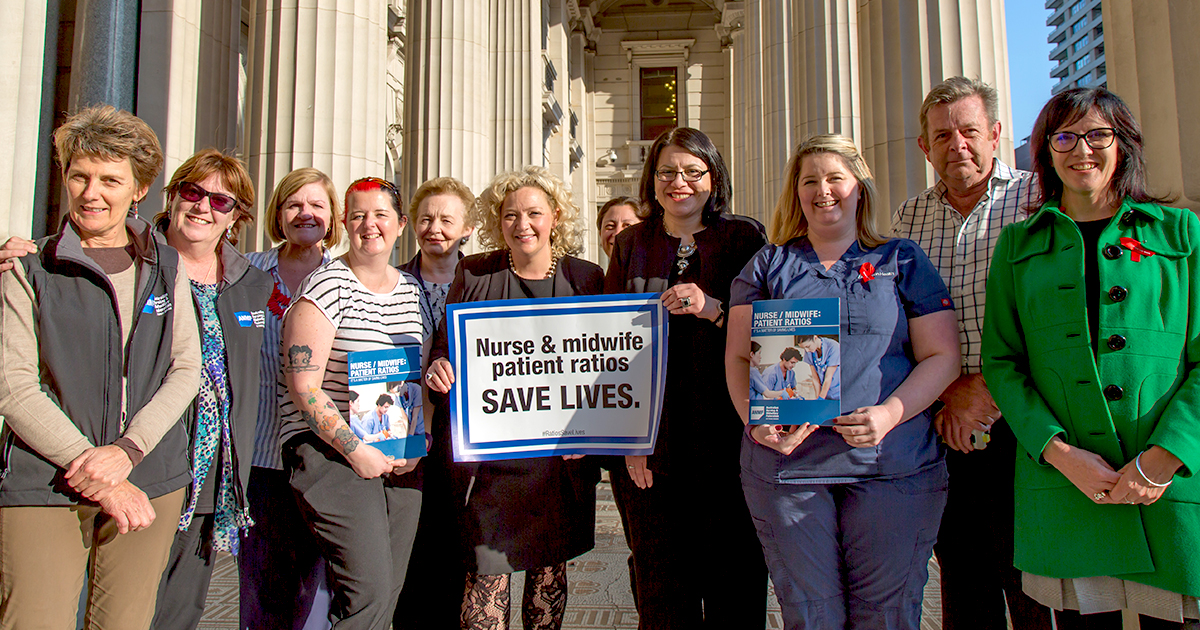
Image from WorkSafe Victoria's anti-violence campaign ‘It’s never OK’
Prior to the 2014 election then-Opposition Leader Daniel Andrews stood on the steps of Parliament and signed our 10-point plan to end violence and aggression committing his government to putting the plan into action.
Since then the Andrews Government has allocated $40 million over four years in the Health Service Violence Prevention Fund to put in place anti-violence capital works in health facilities around Victoria and security guard positions. More than 60 health services have received funding so far for security measures such as installation of closed circuit TV, duress systems and access control measures.
The government has involved ANMF (Vic Branch) in a range of measures to end the occupational violence and aggression that nurses, midwives and carers should never experience.
We took part in the Violence in Healthcare Taskforce the government established in 2015 to identify issues and make recommendations to Health Minister Jill Hennessy on how to end occupational violence and aggression (OVA).
After the taskforce released its report in June 2016, the Andrews Government has worked steadily on implementing its recommendations.
Ending occupational violence and aggression was written into the 2016–20 public sector general and mental health enterprise agreements.
Within three months of the agreements starting, health facilities were required to develop or review their occupational violence and aggression policies.
Every six months, health facilities must undertake audits of their OVA management strategy, in consultation with Health and Safety Reps and clinical care staff.
ANMF (Vic Branch) has been able to use this public sector approach to OVA as a blueprint to put forward to employers in private acute hospitals and aged care facilities.
In June 2017 a powerful government-funded public education campaign sent the message on television screens and billboards that ‘It’s never OK’ to be violent or aggressive to healthcare and aged care workers.
The government also delivered on Code Grey guidelines for health facilities throughout Victoria so there is consistency around the definition of ‘Code Grey’ and how clinical and security staff should respond to actual or potential violence or aggression.




